The Kop, Sir Kenny Dalglish Stand, Anfield Road End and Main Stand. The four stands that make up Anfield, home to Liverpool Football Club.
It is one of the most iconic football stadiums on the planet.
Anfield has housed Liverpool FC for 130 years, hosting some of the most memorable matches the game has seen.
Having been built in 1884, it was originally the home of Everton, with Liverpool not moving in until 1892, when the club was officially founded.
Each stand has its own story.
The Kop
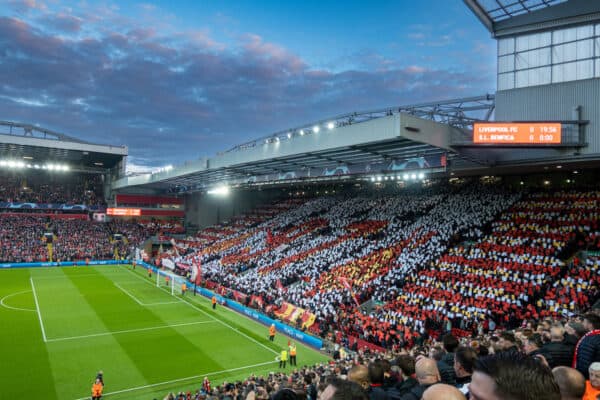
Capacity – 12,850
Disabled Positions – 52
A single-tier structure situated behind the goal opposite the Anfield Road End, the Kop remains one of the most legendary football stands in the game.
It was built, in 1906, as a reward to the fans, after Liverpool had clinched their second league title.
At that time, the Kop was capable of holding as many as 25,000 supporters. It had 100 steps and towered above Walton Breck Road behind the ground.
The name came from a small hill in South Africa known as Spion Kop, where, during the Boer War in January 1900, a battle left hundreds dead.
Many of the soldiers killed came from Lancashire regiments, with a strong contingent from Liverpool. The Liverpool Echo was the first to suggest calling it the Kop.
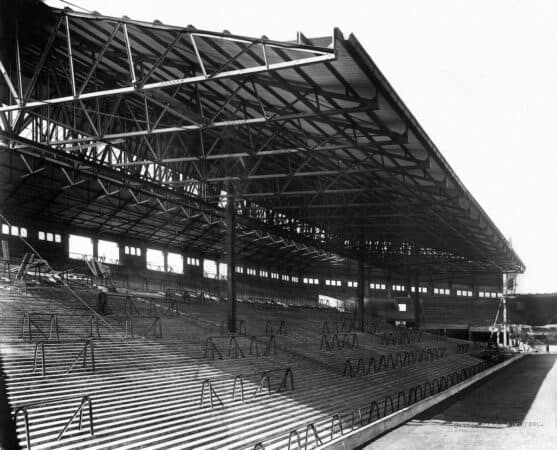
The year 1928 saw an extension to well over 27,000, with a roof added to generate even more noise from supporters.
Spontaneous singing became a trademark of the Kop and the emergence of the Beatles in the ’60s added to the atmosphere.
On April 30, 1994, following the Hillsborough tragedy of 1989, the Taylor Report recommended that terraces in major stadia be replaced by all-seater stands.
So, in May 1994, Liverpool Football Club played in front of the Kop, as it was, for a final time.
Now holding nearly 13,000 people, the Kop remains Anfield’s most famous stand and is a sight to behold on a matchday.
Sir Kenny Dalglish Stand
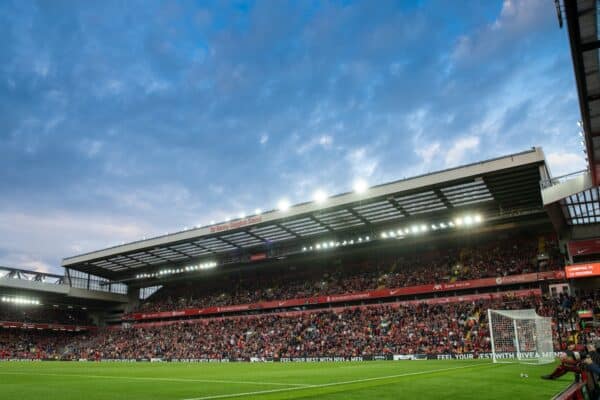
Capacity – 11,762
Upper tier – 4,600
Lower tier – 6,814
Executive boxes – 348
Located opposite the Main Stand, the Sir Kenny Dalglish Stand, as its name suggests, is in honour of the legendary former player and manager.
It has two tiers and can accommodate almost 12,000 supporters.
It hosts executive boxes and the banquet lounge, as well as the PA box, TV set and police operations room.
When Bill Shankly arrived in 1959, he demanded improvements to the facilities at Anfield to match the excellent team he had constructed on the pitch.
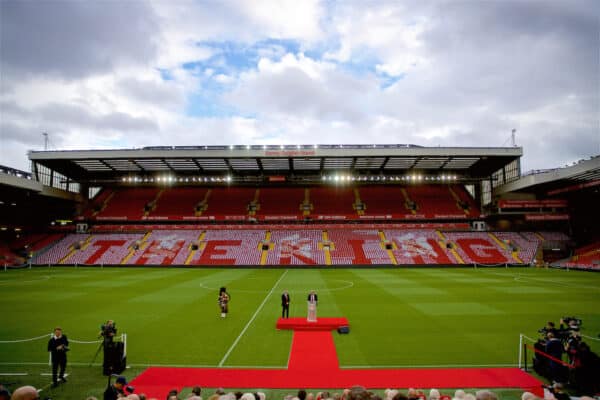
The club marked their long-awaited promotion to the First Division by investing heavily in the Kemlyn Road side of the stadium, constructing a cantilever stand capable of housing around 7,000 fans.
In the early ’90s, the aftermath of the Taylor Report saw another major overhaul to the stand and, having transformed the original structure, the renamed Centenary Stand was opened.
In 2017, the Reds celebrated their 125th anniversary by renaming the stand after Dalglish, one of the most influential figures in LFC history.
His contribution to the club and the city is immeasurable.
Anfield Road End
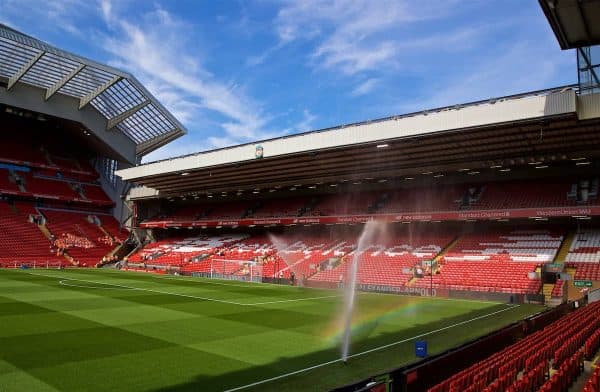
Capacity – 9,074
Upper tier – 2,654
Lower tier – 6,391
Disabled positions – 36
Located opposite the Kop, the Anfield Road End is currently undergoing redevelopment which is expected to be completed in time for the 2023/24 season.
It last underwent a makeover in 1997, when an upper tier was added to the stand.
Over the years, the Anfield Road End has hosted the away supporters at the ground and still does to this day.
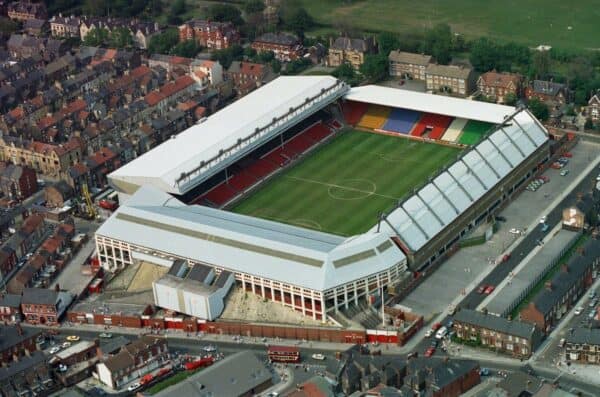
This aerial shot of Anfield was taken in 1989, where you’ll notice the coloured block of seats at the Anfield Road End. This was Bob Paisley‘s doing.
The legendary Liverpool boss watched the reserves at the ground and found the red shirts would get lost in the red seats around the stadium.
He felt having an array of colours would help in seeing the players better.
The expansion of the stand will take its capacity to 15,967 at a cost of £80 million.
Main Stand
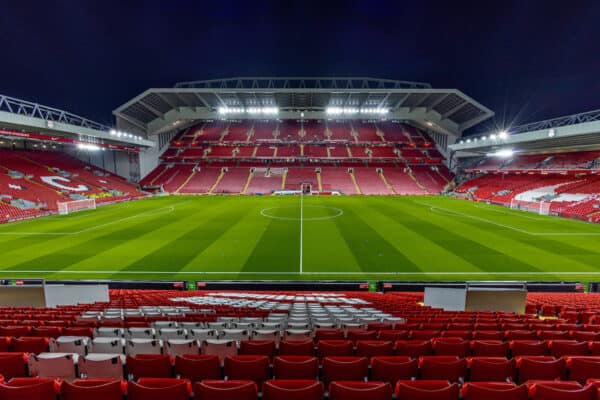
Capacity – 20,676
Lower tier – 9,300
Middle tier – 3,100
Upper tier – 7,900
Disabled positions – 105
Newly built and opened in September 2016, the Main Stand was the oldest surviving structure at Anfield prior to its redevelopment.
The Reds added 8,500 seats to a new three-tier stand at a cost of approximately £110 million, increasing Anfield’s capacity to 54,074.
Before that, there had been years of uncertainty as to whether Liverpool would leave Anfield. A new stadium in Stanley Park was proposed.
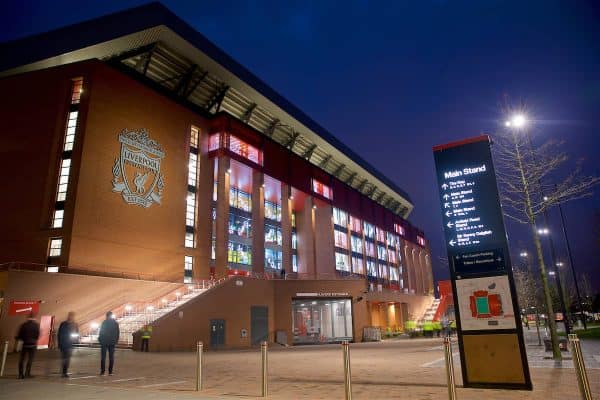
However, after taking over in 2010, club owners Fenway Sports Group decided to stay at Anfield, with work starting on reconstructing the old Main Stand to install a new three-tier stand.
It’s the largest stand in the stadium, and also holds the tunnel and dressing rooms as well as the directors’ box and press box.

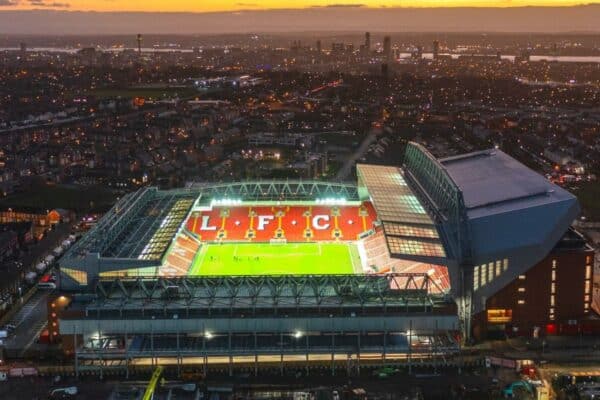
















Fan Comments